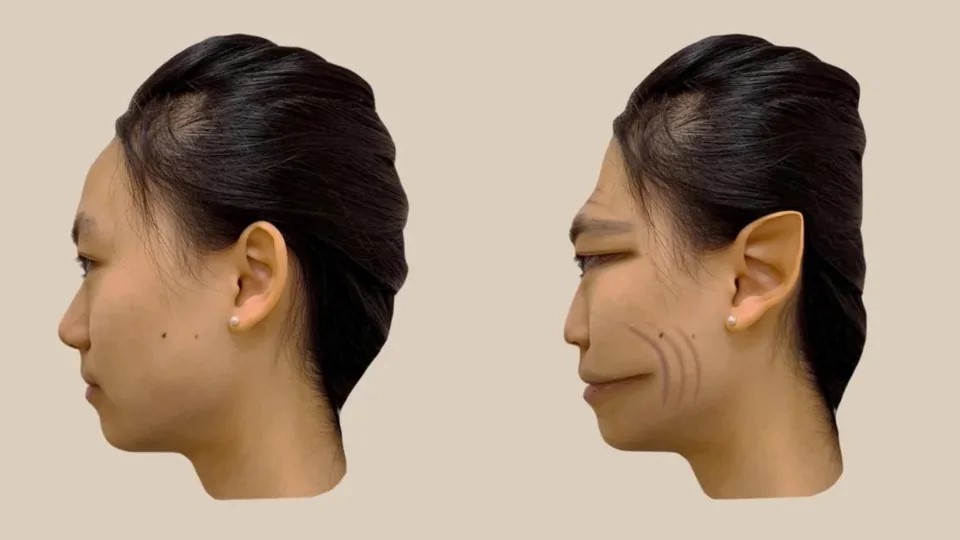Who are prosopometamorphopsia patients and what are the symptoms of the disease?
A scary disease: They see everyone as 'monsters'! 'There are only 81 cases of PMO in the literature' Want to know them? Prosopometamorphopsia is a visual disorder characterized by altered perceptions of faces. About 81 cases of prosopometamorphopsia have been reported in the scientific literature.

The terrible days for 59-year-old Victor Sharrah began one winter day while he was sitting at home in Nashville.
“I had just woken up. I was sitting on the couch watching TV when my roommate entered the room. I looked at him and said, "What do I see?" Then his girlfriend came. And his face was the same..."
These once-familiar faces had very strange expressions, slanted eyes, and deep scars. They turned sideways to reveal pointy ears much like those of Spock, the Vulcan mate of the Enterprise in Star Trek.
"I tried to explain to my roommate what I saw, but she thought I was crazy," Sharrah told CNN. Then I went out and looked around. “All the faces of the people I saw were like that, and they still are,” he says and adds:
It's like looking at demons. Imagine waking up one morning and suddenly everyone in the world looks like a creature from a horror movie.
So what happened? Sharrah had a rare disorder called prosopometamorphopsia (PMO), in which parts of the human face appear distorted in shape, texture, position, and color. But objects and other parts of the person's body remained mostly intact.
Prosopometamorphopsia is a visual disorder characterized by altered perceptions of faces. In the perception of a person with the disorder, facial features are distorted in a variety of ways including drooping, swelling, discoloration, and shifts of position. Prosopometamorphopsia is distinct from prosopagnosia, which is characterised by the inability to recognise faces. About 81 cases of prosopometamorphopsia have been reported in the scientific literature. In about half of the reported cases, features on both sides of the face appear distorted. In the other half of cases, distortions are restricted to one side of the face (left or right) and this condition is called hemi-prosopometamorphopsia.
“I described what I saw and helped create a 2D image on the computer, but it is much more than that,” says Sharrah, speaking about research on her case published in The Lancet's 'Clinical Pictures' section. He says that there are things we cannot see, such as speech, movement, and facial expressions.
“It takes me away from other people a little bit. I try not to let it happen because I know what it is, it's PMO. “I still feel like I can't be as close to people as I used to be.”
There are different types of 'distortion'
Prosopometamorphopsia, actor Brad Pitt, famous neurologist Dr. It is very different from Oliver Sacks, Princess Victoria of Sweden, and the 'face blindness' condition seen in approximately 1 in 50 people. In face blindness, faces are not deformed; Instead, the brain has a hard time recognizing faces (even familiar ones) and almost everyone seems like a stranger.
However, in PMO, the person usually has little trouble recognizing a loved one or a familiar face, but the faces are often deformed in similar ways.
Sharrah says the basic distortions, such as lines on the face, pointed ears, eyes, and mouth pulled back, are the same in every person she sees. However, there may be some differences depending on the shape of the person's face, the size of their head, and how they move.
Some people with PMO also see their own faces as deformed or even damaged. According to a literature review dated April 2023, two patients 'seen one of their eyes popped out of its socket and slid down their cheek while standing in front of the mirror'.
According to the description in another published case study, some patients with this disorder see people's faces as shapeless, like a 'funfair mirror'. Others perceive only half of the face as distorted or misshapen.
Some patients with PMO describe the faces as 'like clocks in a Dali painting' and 'kaleidoscopic'. Others see faces transform into dragons or fish heads. There are patients who see ears located on the top of the head, eyes that separate from the head and rotate, and short arms attached to the face. Some say they see a third eye in the middle of people's foreheads.
“The woman who saw a dragon started seeing it that way when she was a child,” said Brad Duchaine, a professor of brain sciences at Dartmouth College in New Hampshire. "There are PMO patients who grow up this way," he says.
